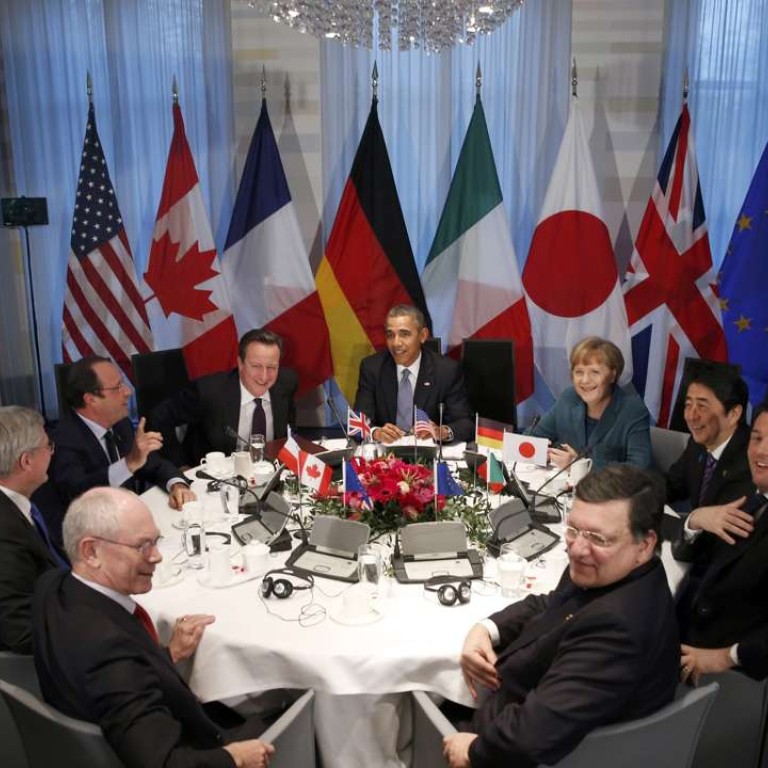
Nuclear security summit must carry on beyond Obama’s term in office
Andrew Hammond says though the chance of a nuclear terrorism event is low, its consequences would be so catastrophic that international cooperation on nuclear security must continue
There is growing concern about the threat of nuclear terrorism. After Brussels, British defence secretary Michael Fallon pointed to a “new and emerging threat” of terrorists acquiring nuclear weaponry, while former US defence secretary Robert Gates has noted that “every senior leader, when you’re asked what keeps you awake at night, it’s the thought of a terrorist ending up with a weapon of mass destruction, especially nuclear”.

Brussels bombings expose Europe’s stark choice between security and freedoms
More than 50 countries will convene at the Nuclear Security Summit to focus on “minimising the use of highly enriched uranium, securing vulnerable materials, countering nuclear smuggling and deterring, detecting and disrupting attempts at nuclear terrorism”. This wide-ranging agenda first came to prominence following the collapse of the Soviet Union, when concerns were raised about safeguarding the former communist state’s extensive nuclear weaponry.
The urgency of nuclear terrorism was raised by the September 2001 attacks
More recently, however, the urgency of nuclear terrorism was raised by the September 2001 attacks. This was interpreted in some quarters as a wake-up call to the possibility that a group such as al-Qaeda could detonate a small nuclear weapon or a radiological dispersal device (a so-called dirty bomb).
The summit process kicked off soon after Obama assumed office when he asserted that nuclear terrorism represents “the most immediate and extreme threat to global security”. In the same speech, he gave an ambitious deadline to “secure all vulnerable nuclear material around the world within four years”.
While this deadline was unrealistic, there has been progress in reducing the number of countries with access to highly enriched uranium and plutonium. For instance, enough such highly enriched uranium for some 3,000 nuclear weapons has been “down-blended” in Russia and the US, around a dozen countries have returned their previous stockpiles of it back to the country of origin (mostly to the US and Russia); and around 20 countries have launched an initiative against nuclear smuggling.
However, this effort remains a work in progress. As of late 2013, for instance, some 30 states from Europe to Asia, including Uzbekistan and Pakistan, had at least 1kg of highly enriched uranium in civilian stocks.

Sting operations in Europe reveal how nuclear smugglers wanted to sell radioactive material to Islamic State who may be plotting dirty bomb attacks
Given the hurdles to terrorist networks obtaining weapons-grade material, perhaps the bigger danger is a dirty bomb attack. Here, the complexity of the operation is much reduced as conventional explosives would be used to spread radiation from a radioactive source. Only in December 2014, Mexican authorities discovered a vehicle believed to have been stolen by thieves which contained radioactive medical materials that could have been used for a dirty bomb. A further potential scenario is an attack on a nuclear plant.
Given the hurdles to terrorist networks obtaining weapons-grade material, perhaps the bigger danger is a dirty bomb attack
With this potentially final Nuclear Security Summit coinciding with Obama’s last full year in the White House, it is likely that he will want to ensure the strongest possible set of outcomes. This would build upon the achievements in the previous meetings, which have reduced the amount of dangerous nuclear material across the world; improved security of much of this material; and strengthened international cooperation on this agenda, although the latter has been stymied since the post-Ukraine conflict chill in relations between the United States and Russia.
Beyond the summit, long-term success of its agenda will be determined by several factors, including resources, funding and what happens to the process after Obama. Especially if the summit is not renewed beyond 2016, it will be important to anchor ongoing initiatives into other bodies, including the International Atomic Energy Agency, so that the momentum and successes of the process are institutionalised as much as possible for the future.
Andrew Hammond is an associate at LSE IDEAS (the Centre for International Affairs, Diplomacy and Strategy) at the London School of Economics

